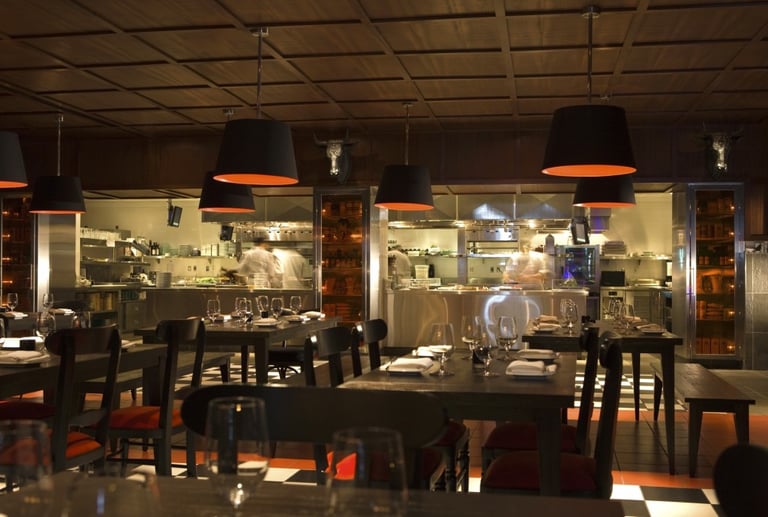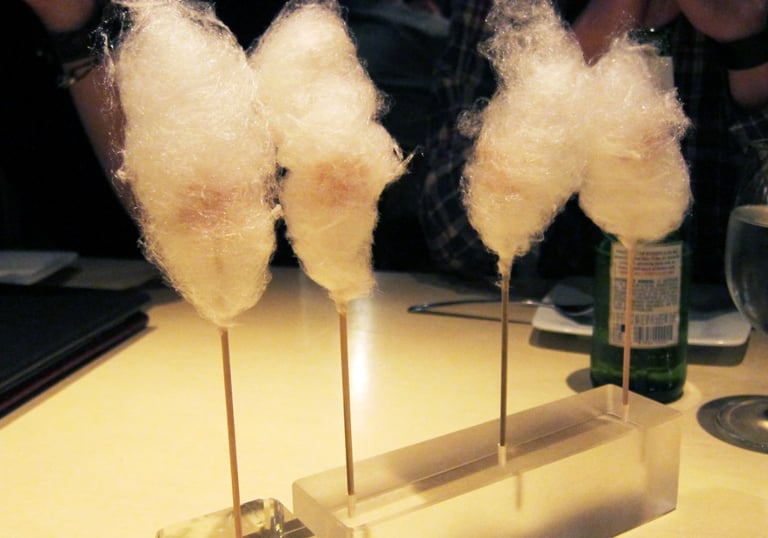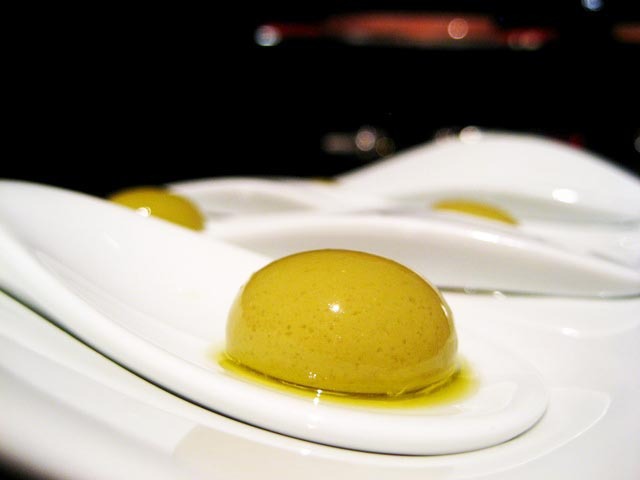Putting on Airs at Jose Andres’ Bazaar
Evan Moffitt
3/17/2012


The Bazaar, Jose Andres’ tapas bar at the SLS Hotel, serves traditional Spanish small plates that flirt with molecular gastronomy, the kind of colorful and gelatinous food I could imagine Patrick Bateman picking at in a SoHo sushi joint in Bret Easton Ellis’ novel, American Psycho. The restaurant, designed by restaurateur Phillippe Starck, is a sprawling book-lined room resplendent with angled mirrors and rich colors that give the terrace its Spanish name of “Rojo y Blanca” (“Red and Black”). Far from a Katsuya cousin, Starck’s interior design at the SLS is too busy and too trendy to be considered “cutting edge.” But sitting in my cozy chair, I had just enough light to ponder the curious menu and the thick fog of liquid nitrogen spilling across the tabletop from my frozen Caipiriñha.


There was cotton-candy coated foie gras and square-cut, jelly Daishi linguini assured to “change your life.” The strangest of the mix, Andres’ reimagining of a traditional tortilla española, was a bright yellow shot of an egg 63 (perfectly poached, my waiter assured me) suspended in potato cream over liquefied caramelized onions. The shot was the essence of a frittata, but without the dish itself—a tease for the tastebuds that left my stomach growling. An entire section of Andres’ menu boasts sandwich sliders on “air bread”—a pillow-puff of bread-flavored air that tricks the palate into thinking it might actually be eating something. Andres is a gifted chef whose acclaim follows him from Spain, where molecular gastronomy has become the vogue. Masters of molecular precision, new chefs like Andres see food through the lens of gustatory science. Finally, it seems, we’ve reached that impossible culinary future where three-course dinners come as small as a piece of chewing gum or a Willy Wonka Gobstopper.


